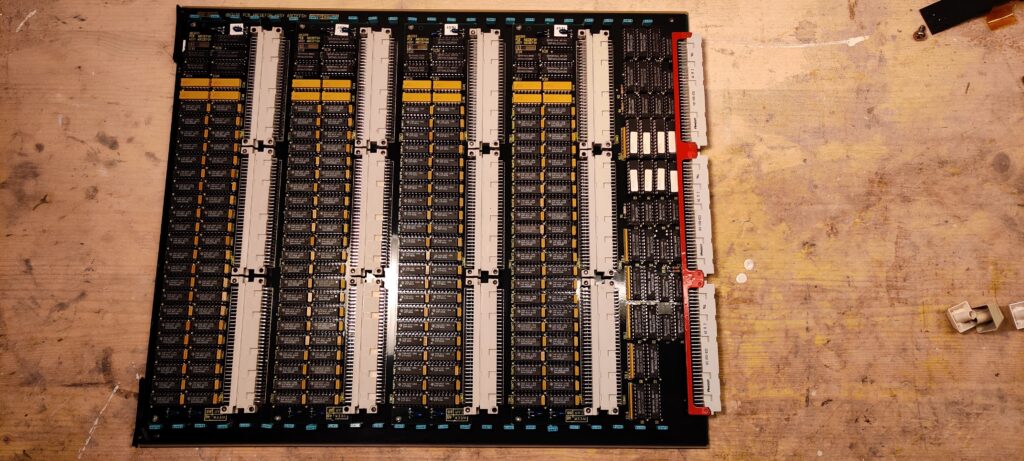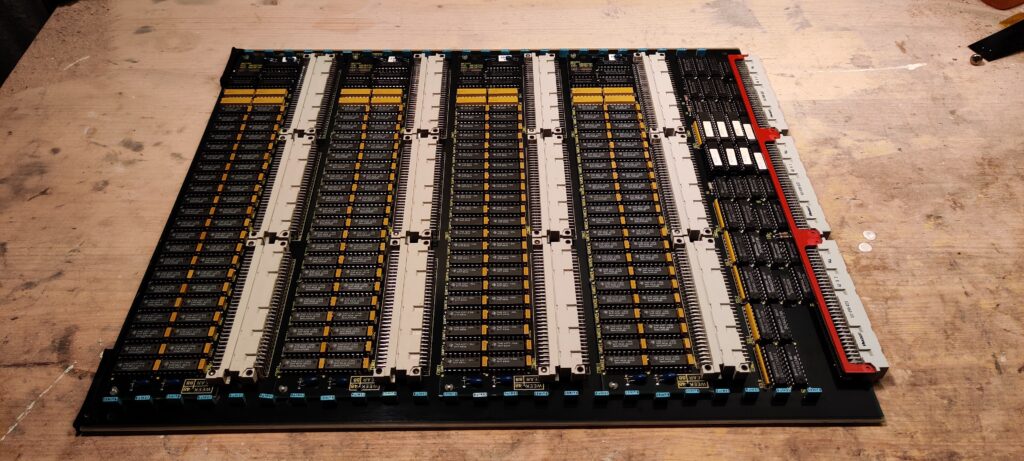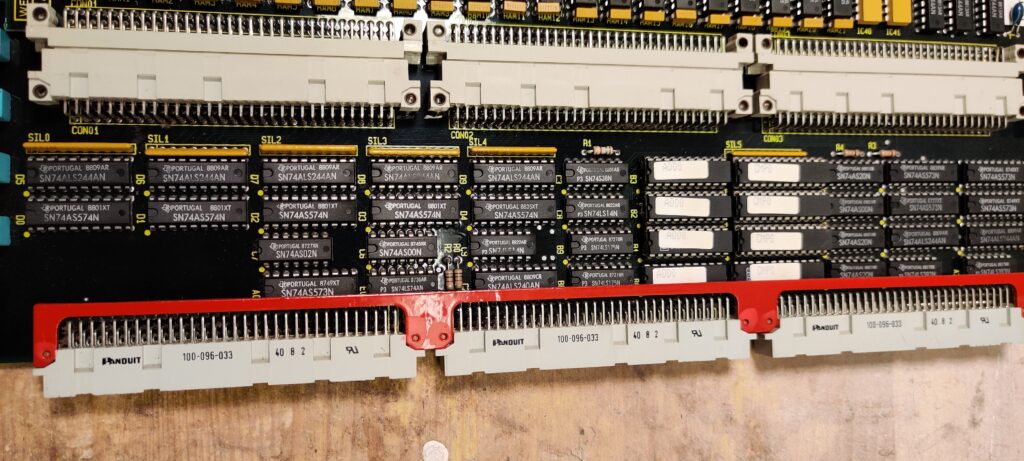I think everyone knows the feeling about throwing something out and then regretting it because they needed it or wanted to save it as a memory. Fortunately I refound this old DDE RAM module in an old moving box.
One of those situations happened to me when I moved to a new apartment. The story starts a couple of years earlier when I was in high school (Higher Technical Examination). My school had a room in the basement that had to be cleared out. Somehow I got to hear about it before it was thrown out and with the help from my dad we were allowed to fill the car with old computers. The janitor was just happy that we helped him so he didn’t had to empty it all by himself because some of the equipment was rather heavy.
At the time I didn’t know much about the value (both historical, economic and emotional) of old computers. None of it was complete and I didn’t know how it worked so I took it apart. As I remember there were three large computer cabinets (not PCs) from a Danish computer company called Dansk Data Elektronik (DDE). They had huge 5.25” floppy and 5.25” HDD drives. The nice thing was that it didn’t have a usual motherboard but instead a big backplane with up to 12 big circuit boards installed. I kept that backplane enclosure with the circuit boards for years but lost interest in it and ran out of empty storage space, especially because the power supply that came with it was huge. So I had to let it go.
Now back to our story. During a cleanup in some moving boxes with old stuff I refound one of those RAM modules from the backplane where there originally had been 4-6 RAM modules. I also found the microprocessor from the MCU board – a real nice 10 MHz 16/32-bit Motorola 68000 in ceramic package. Apparently I had kept those things because I thought they were too cool to throw out.
Each of the RAM memory boards had four smaller circuit boards mounted each with 44 16-pin DIL ICs from Texas Instrument. Model TMS 4257-12NL 262.144-bit dynamic random-access memory 120ns. That is equal to 32kbyte of memory pr chip. For a complete board that is equal to around 5,7 MB of RAM not taking parity, redundancy or error correction into account.
The sub-boards have a data code stating week 48 of 1988 that means older than 30 years, and two years younger than me!
At the bottom of the large circuit boards there are a lot of buffering and control logic together with three 3×32 DIN 41612 connectors for connecting to the backplane. By a rough estimate the complete board has more than 6.000 through-hole soldering joints. The board has a total weight of 1,5kg and measures 33 by 40 cm.
This board is an amazing example on how the physical size of RAM has dropped, memory capacity has exploded and the manufacturing complexity has been optimized a lot since modern RAM modules consist of very little besides the usual 16 memory chips.









